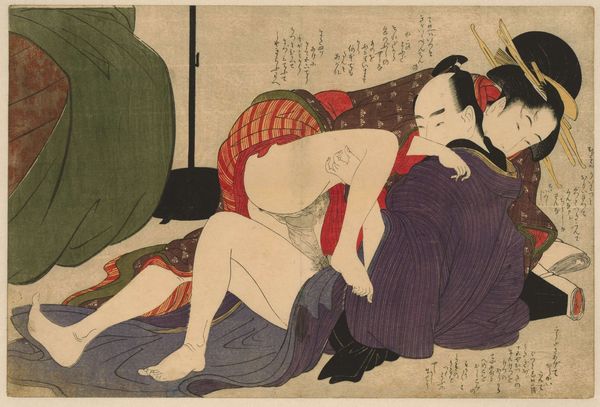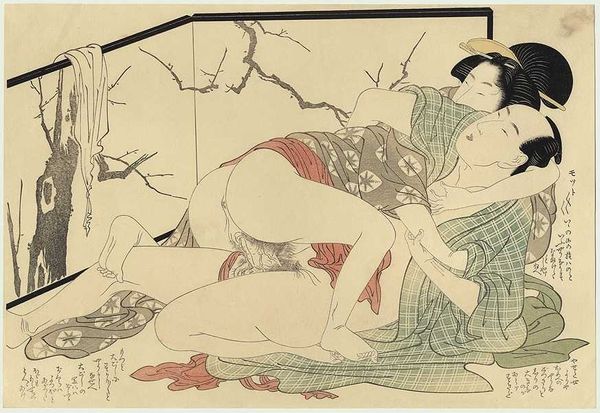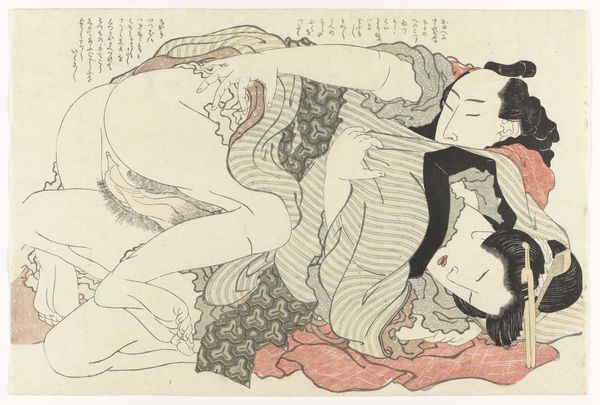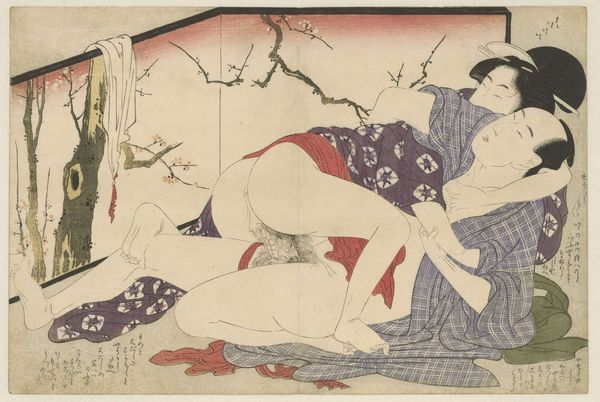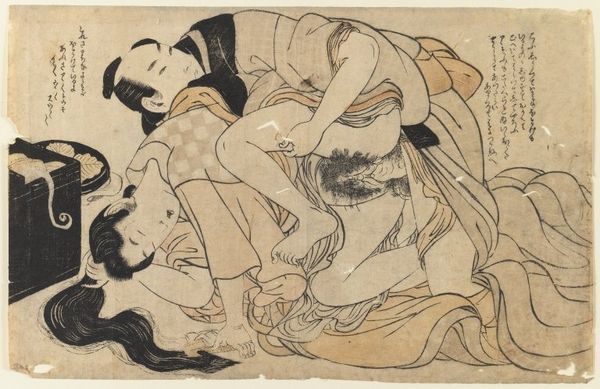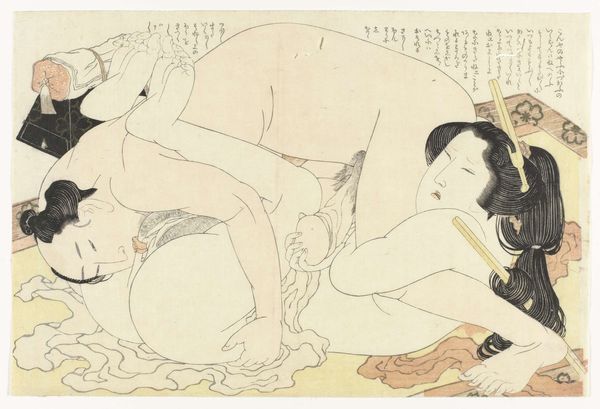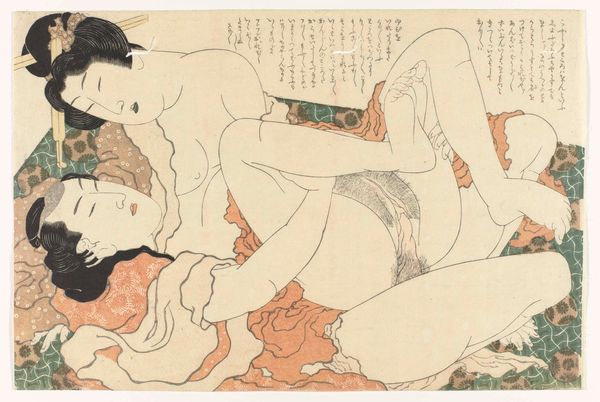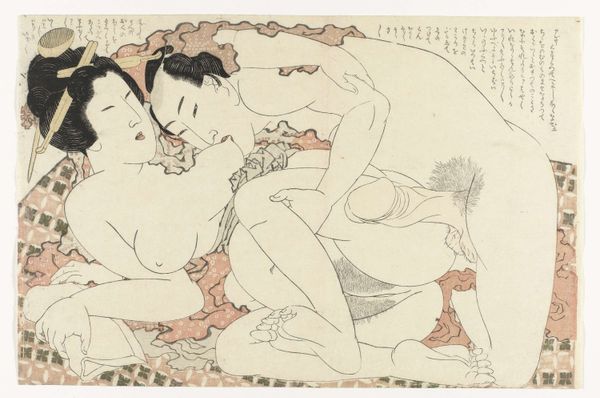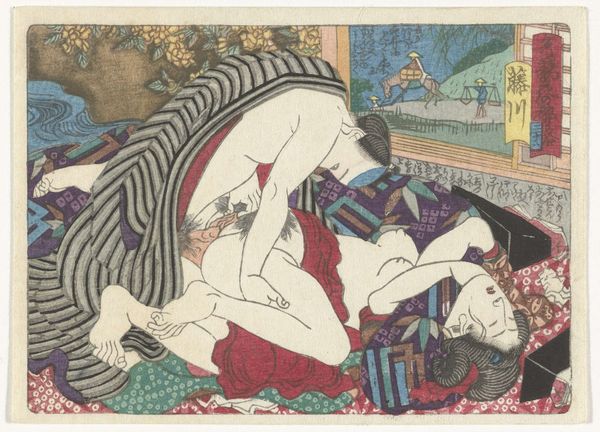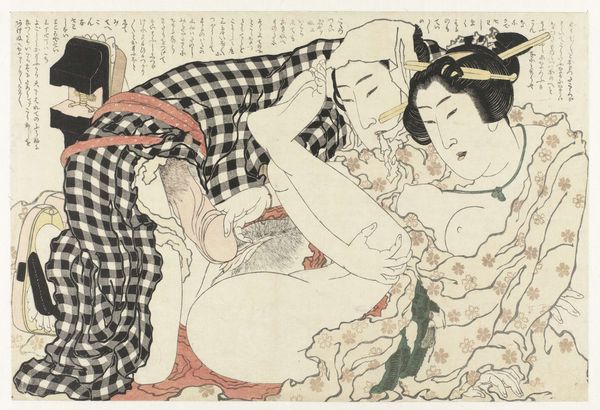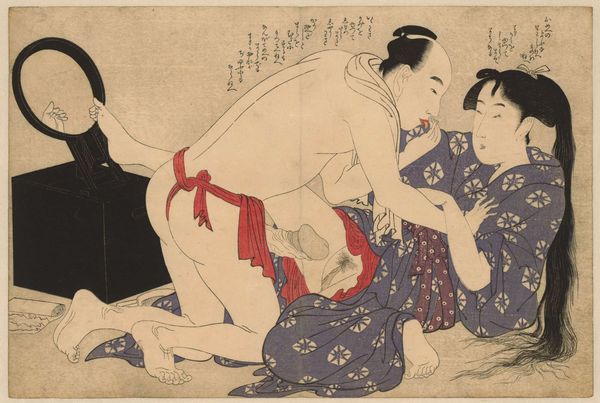
print, woodblock-print
# print
#
asian-art
#
ukiyo-e
#
figuration
#
woodblock-print
#
erotic-art
Dimensions: height 257 mm, width 384 mm
Copyright: Rijks Museum: Open Domain
Yanagawa Shigenobu made this woodblock print, "Satyr en nimf bedrijven de liefde", in Japan, sometime between 1800 and 1832. At first glance, the imagery might seem shocking due to the explicit depiction of sexuality. Yet, this print belongs to a tradition of Japanese erotic art called Shunga. It flourished during the Edo period, reflecting a more open attitude towards sexuality than often found in Western art history. By depicting a satyr and a nymph, Shigenobu blends Japanese artistic traditions with an awareness of Western mythological themes. The presence of text alongside the image is a common feature of Shunga prints, adding layers of narrative and context to the visual scene. It's tempting to think about how these prints were circulated and consumed. Were they part of a broader cultural acceptance of eroticism, or were they subversive objects shared in more private settings? To fully appreciate this artwork, we can draw from historical accounts, social commentaries, and studies of Japanese art and culture. This will help us understand how art engages with, reflects, and shapes social attitudes.
Comments
No comments
Be the first to comment and join the conversation on the ultimate creative platform.
